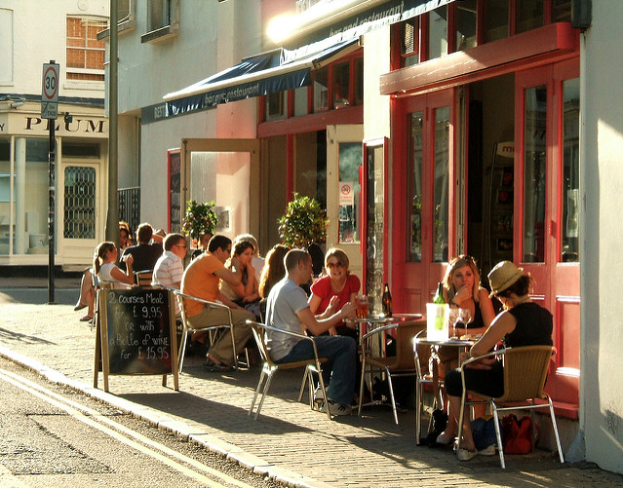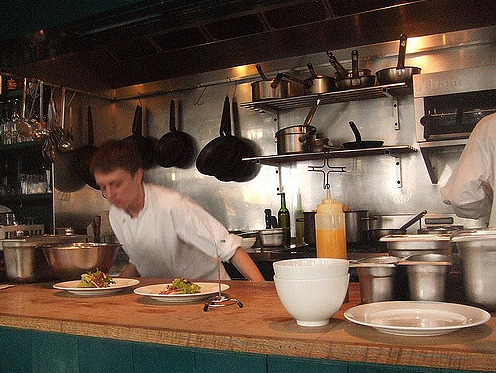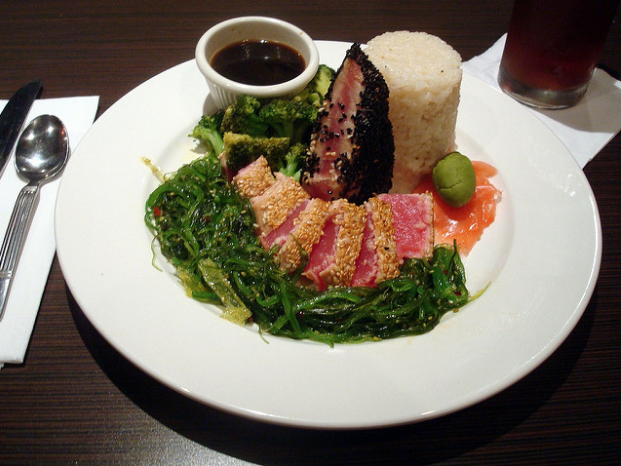
(Source: Flickr)
When you first open a restaurant, your biggest goal is to bring customers through the door. But as your business continues to develop, it should become a key goal of your business to increase the frequency of customers coming back through the door. One study found that a whopping 70% of restaurant customers never make a return visit; by changing these statistics in your own restaurant, you can help ensure the success of your business.
Here, we’ll explore some of the common reasons why customers aren’t coming back, and what you can do to change that to help ensure your restaurant’s future success.
- You haven’t trained your employees. It’s true: it takes time and money to properly train employees. It can be tempting to cut corners by skipping or rushing the process, but it could lose you money in the long run.
In a nutshell, when employees aren’t properly trained, they aren’t equipped with the knowledge and service panache which makes for a great customer experience. When customers don’t have a great experience, you can bet that they’ll be giving their time and money to a different establishment next time! - Your food isn’t great. It might be a hard pill to swallow, but the reason why customers aren’t coming back could be because your food isn’t up to snuff.
So how do you know if this is the reason? There are some definite indicators. For instance, if reviews are frequently noting that the food isn’t great, or many dishes are being returned to the kitchen, it may be a sign that things need to change on your menu. - The ambiance leaves something to be desired. Did you hang up a few posters and call your restaurant decorated? Or, perhaps you went all out, but chose a trendy look that already looks dated? Or maybe you decided on chairs that look cool but hurt to sit in after fifteen minutes? Your decor decisions could have an effect on customer return ratios.
Even without realizing it, people will shy away from spaces in which are uncomfortable or unwelcoming. Make sure that your restaurant has a positive ambiance with comfortable seating and ample space. You might notice an uptick in return customers! - Your restaurant isn’t clean. In some areas, restaurants are required to display a “grade” signifying the health department’s rating of the restaurant’s cleanliness. You’d better believe that a restaurant with a B or C rating is going to have less business than a restaurant with an A grade.
Even if you’re not in an area where a grade is displayed, act as if you want to earn an A+. A restaurant that is clean will not only provide better quality food, but is less likely to accidentally food poison a customer, which would absolutely ensure that they will never return.
Be sure to extend “cleanliness” to the personal cleanliness of your employees, too. Uniformed, presentable employees will make your establishment look far more clean and polished than unkempt, sloppily dressed employees.
 (Source: Flickr)
(Source: Flickr) - Your service isn’t consistent. Is your service quick one day, slow the next? Do some entrees come out in a hurry, and other not so fast? Are some plates full, others spare? If your restaurant is inconsistent, either with service, food offerings, or both, people are not going to keep coming back.
The fact is that people are creatures of habit, and like returning to their comfort zone. If they can’t count on consistent service in your restaurant, they will likely turn to an establishment that can provide that for them. Be sure to hone your menu and train your staff so that you can deliver constant, even service. It can help you retain customers and keep you from losing money.
 (Source: Flickr)
(Source: Flickr) - Inappropriate pricing. Just because you can charge $30 for a pizza doesn’t mean you should; this can alienate customers and leave them disappointed. At the same time, offering it dirt cheap isn’t the solution either; when food is too cheap, it lessens its appeal to customers, and plus, you want to make a profit!
Pricing your food is sort of a Goldilocks situation: you want to linger in that “just right” territory. The proper pricing for your food requires that you take a look at your cost of goods, operating costs, and what prices seem fair and appropriate in the area where your restaurant is located. Take the time to figure out the right pricing before you have menus printed! - You’re not on social media. You don’t have to like social media. A lot of restaurateurs don’t, to tell you the truth. But like it or not, you’ll need to find peace with it and a space for it in your business plan if you want people to keep coming back.
Social media is a powerful way to forge relationships with your customers. People are overwhelmed in this day and age; if they’re not being reminded of your existence on apps like Instagram, they can easily forget about you. Social media allows you to remain on customers’ minds, and to promote news, special events, and offerings.
 (Source: Flickr)
(Source: Flickr) - You don’t offer specials. While consistency is vital for a restaurant, it’s important to differentiate between consistency and complacency. Offering specials–be they daily or weekly specials, a rotating seasonal menu, or happy hour deals–is a great way to keep things fresh at your restaurant and give customers an incentive to return.
For instance, a customer might really enjoy your food, but might not have reason to come to your restaurant twice in a single week. However, if your establishment offers interesting specials multiple nights a week, that might just be the exact amount of incentive they need to make a return visit.
Conclusion: Taking steps to make your restaurant alluring for repeat business is worth your time and effort. After all, while it’s great to get new customers in the door, it’s the regulars who will keep your business afloat over the months and years, by returning and spending money, and by increasing your business through word of mouth. Treat them well, and give them good reasons to keep coming back, and chances are, you’ll enjoy many years of successful business at your restaurant.
Do you have a high return rate for customers at your restaurant?


